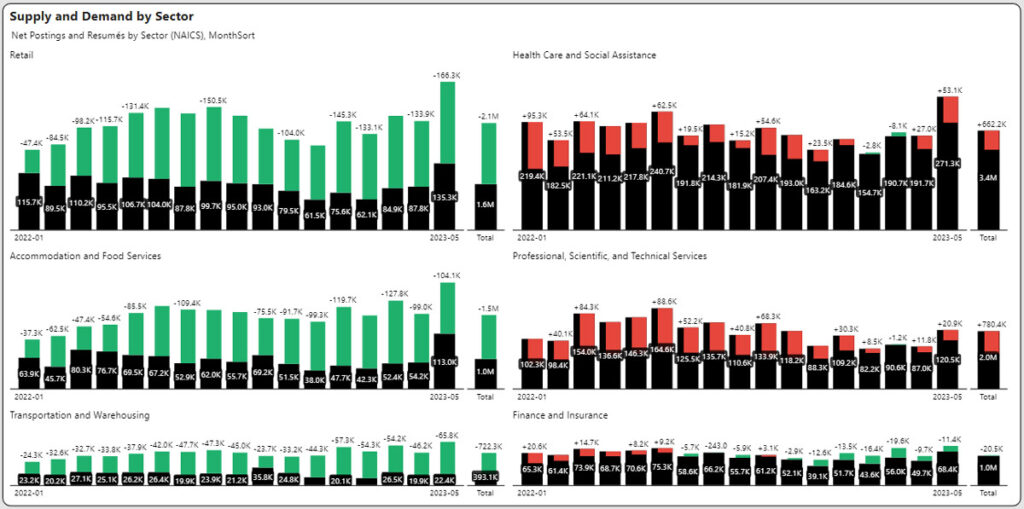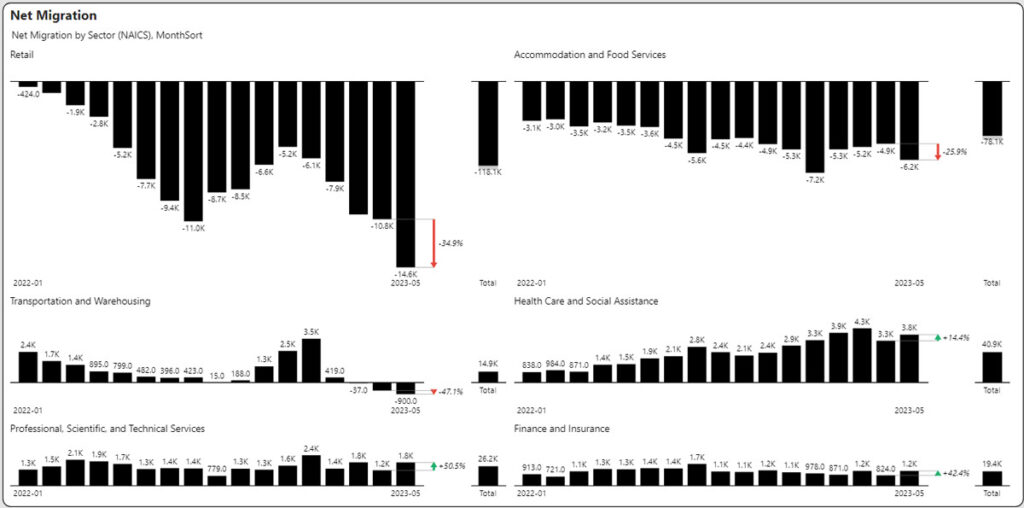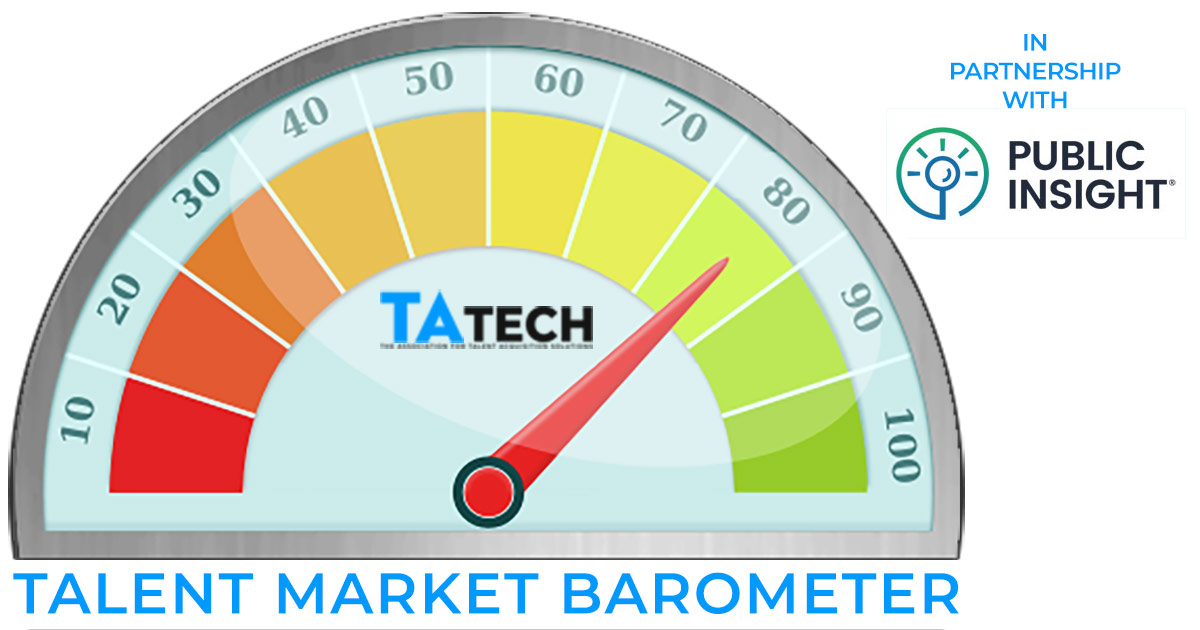A joint project of TAtech and Public Insight(R)
In Brief
The TAtech Talent Market Barometer is based on two metrics for the U.S. talent market: the Supply-Demand Ratio and Net Migrations. The Supply-Demand Ratio compares the number of job seekers with resumes to the net number of jobs posted in a select set of workforce sectors. Net Migrations measures the number of people with resumes entering or leaving those same sectors. Together, they provide recruiters with an empirical assessment of the conditions they will face in the talent market and a commonsense forecast for dealing with them.
In May, the Supply-Demand Ratio and Net Migrations data indicate improvement in some segments of the talent market. Therefore, the TAtech forecast for the next 30 days is for a variable talent market with a mixture of partly sunny and stormy conditions. In such an environment, we think it would be wise for recruiters to wear a hat, to avoid getting either overheated or drenched, whichever might be caused by their specific recruiting requirements.
The Supply-Demand Ratio Readings
Among the six workforce sectors we monitor (which comprise approximately 50 percent of the U.S. working population, according to the U.S. Census Bureau), four had more job seekers than job postings in May. Typically, such positive supply-demand ratios in a majority of the monitored sectors translates into a favorable talent market for recruiters. Moreover, the size of the differential between the supply of workers and employers’ demand for talent also increased in all four sectors, despite the fact that all four saw an increase in the number of posted jobs. Therefore, the Supply-Demand Ratio in May points to an improving talent market for recruiters, which is a definite upgrade from the deteriorating market last month.
A favorable supply-demand ratio existed in the following sectors:
• Accommodation & Food Services
• Finance & Insurance
• Retail
• Transportation & Warehousing
There was an unfavorable Supply-Demand Ratio in:
• Healthcare & Social Assistance
• Professional, Scientific & Technical Services
However, it should be noted that in the two sectors that did not have a favorable Supply-Demand Ratio – Healthcare & Social Assistance and Professional, Scientific and Technical Services – the differential between the availability of workers and employers’ demand for talent declined, with both showing an increase in the number of jobs posted and a decline in the number of job seekers in the market.

The Net Migrations Readings
In the six workforce sectors we monitor, three of the sectors had fewer people with resumes coming into the job market in May, which was an improvement over April’s reading when five of the sectors showed a decrease in worker participation. In addition, among the three sectors with a favorable net migration trend, two – Professional, Scientific & Technical Services and Finance & Insurance – actually had readings that were substantially better in May than in April, despite an increase in jobs posted in both. For that reason, the Net Migration reading for May also points to an improving talent market for recruiters.
Those sectors with a negative net migration trend were:
• Accommodation & Food Services
• Retail
• Transportation & Warehousing
The sector with a favorable net migration trend was:
• Finance & Insurance
• Healthcare & Social Assistance
• Professional, Scientific & Technical Services
Conditions are unsettled, however. The improvement in the overall talent market in May was partially offset by the fact that the talent shortfalls in the three sectors that continued to show a negative net migration trend were larger than they were in April, ranging from 14.4 percent in Healthcare & Social Assistance and 25.9 percent for Accommodation & Food Services to 47.1 percent for Transportation & Warehousing. Said another way, while the general pattern is for a better market, conditions in certain segments are getting worse.

Our Forecast
Our forecast looks at the month-to-month changes in both the Supply-Demand Ratio and Net Migrations to forecast a talent market that is:
• Challenging for recruiters
• Deteriorating for recruiters
• Unchanged for recruiters
• Improving for recruiters
• Favorable for recruiters
Based on the Supply-Demand Ratio and Net Migrations readings for May, our Talent Market Barometer Forecast for June is: Wear a hat. Recruiters will risk overheating in some segments of the market and getting drenched in others.
Job Market Data & Analytics: Public Insight provides job market insights that optimize recruiting and career strategies and improve talent acquisition.
Public Insight acquires the market data used in the Barometer from Indeed and Glassdoor (Recruit Holdings) as well as select government publications and then analyzes it to produce a broad range of in-depth metrics. The resulting data set provides a targeted 70 percent proxy for the talent market in the U.S.

